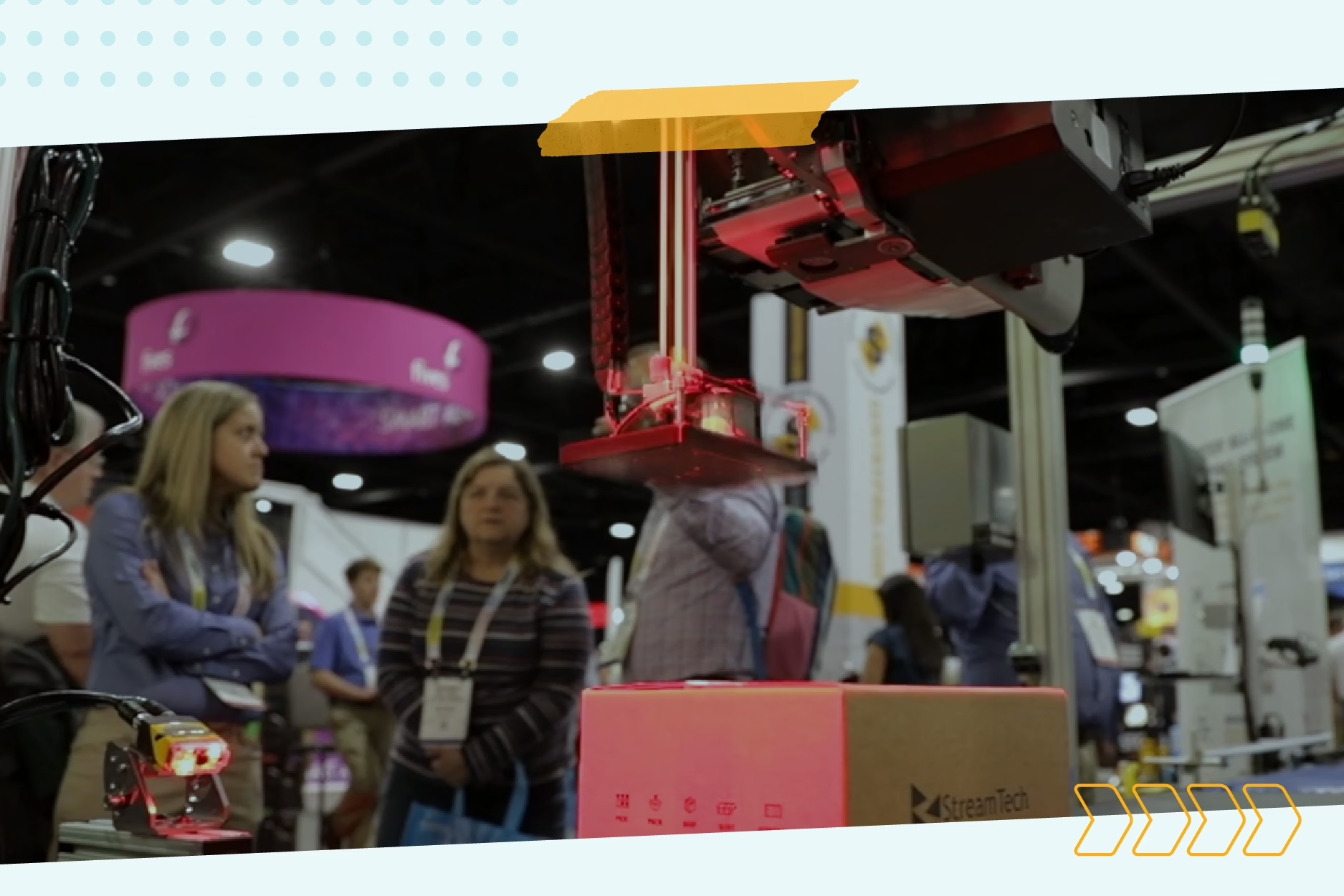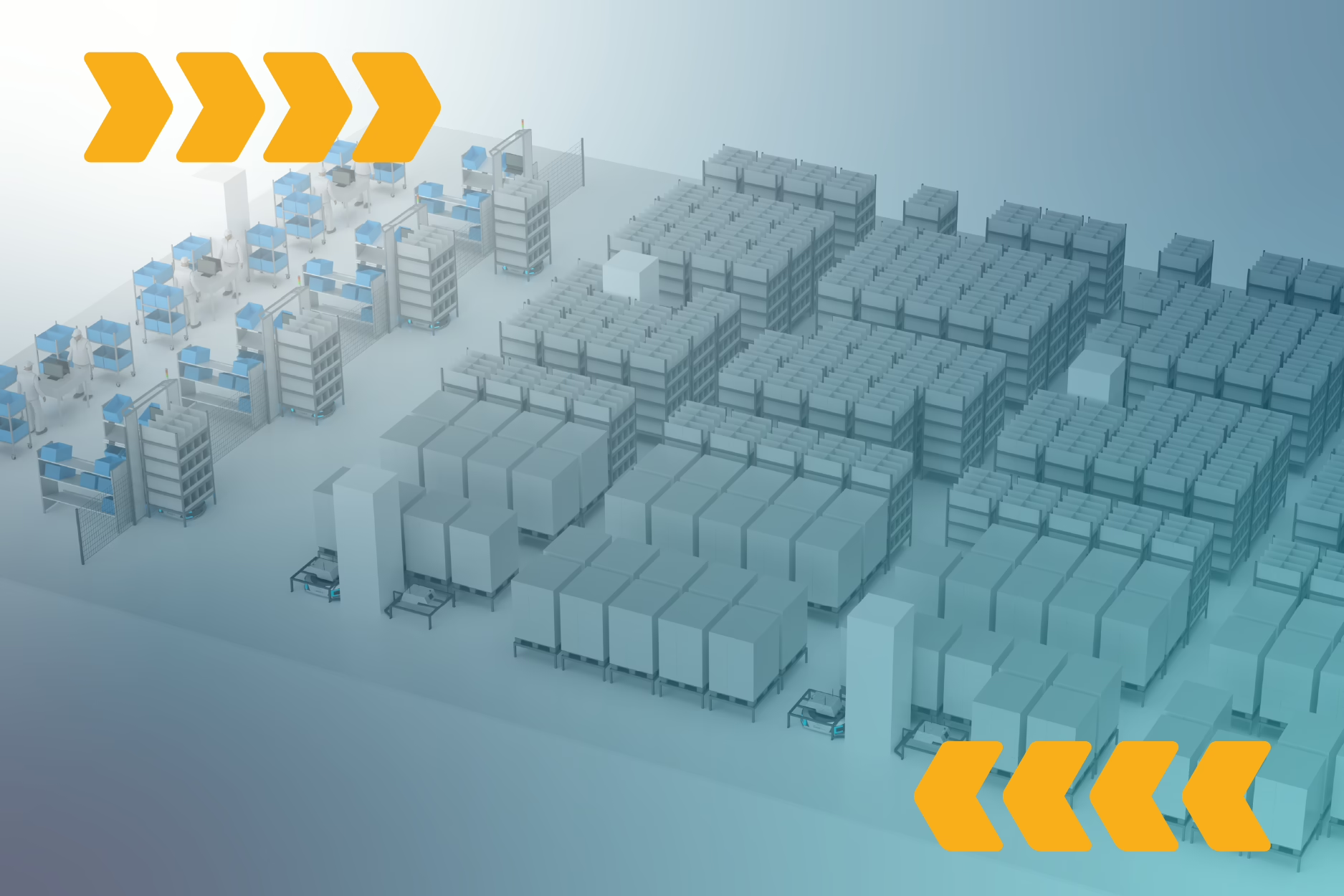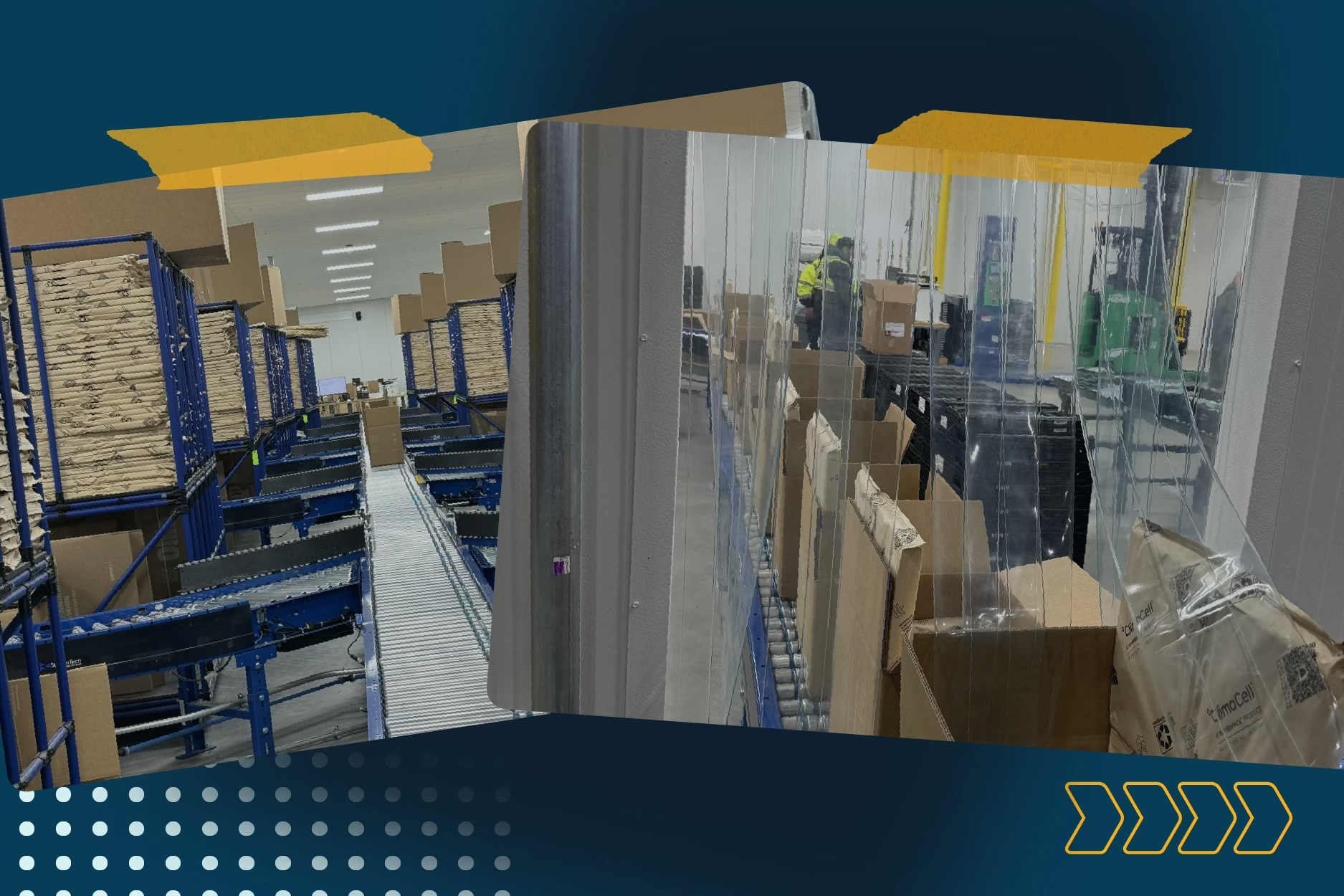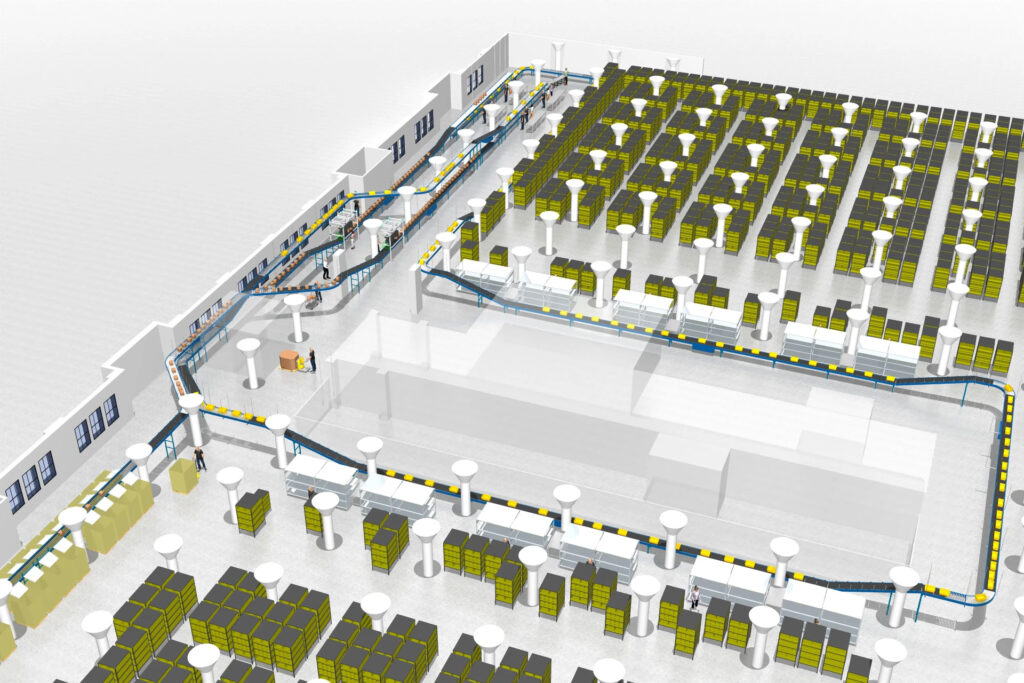Estimated reading time: 6 minutes
Warehouse fulfillment sounds simple: Get an order, pick the order, pack and ship. What could be more straightforward?
But any veteran of the industry will tell you that warehouse fulfillment has its fair share of complexity. From scales and scanners to conveyor lines to multiple software controls, warehouse fulfillment has become an increasingly complicated and increasingly technical aspect of high-volume businesses. Automation and software have a huge role to play here, especially when it comes to SLAM (Scan, Label, Apply, Manifest).
If you’re in high-volume fulfillment, distribution, or manufacturing, SLAM is the backbone of your shipping operation—and if you’re not automating it, you’re leaving money on the table.
Demystifying SLAM: The Backbone of Warehouse Fulfillment Efficiency
For any warehouse operation, SLAM should be a comprehensive process designed to ensure every package is handled with precision. Here’s what that looks like at each stage:
Scan: Capturing Critical Data Upfront
Before a package reaches the labeler, the scan stage ensures that every shipment is identified, measured, and verified in real-time. Using in-motion scales, high-speed barcode scanners, and machine vision systems, the SLAM process captures essential data such as weight, dimensions, serial numbers, and IMEIs. This early quality control step is crucial—if the system doesn’t have an accurate read on a package before labeling, it risks downstream errors that can cause misroutes, delays, or compliance failures.
Scanning isn’t just about reading a barcode; it’s about verifying accuracy at the first possible touchpoint. If a package is missing required data, flagged as overweight, or doesn’t match what the warehouse management system (WMS) expects, the SLAM system can trigger exception handling workflows before the package moves further down the line. Unlike manual inspections, which can be slow and inconsistent, this automated QC can quickly verify correct fulfillment (or redirect errors) at high throughput speed, all while keeping records of the task.
Print and Apply: Labeling at Volume
In high-volume fulfillment, print and apply labelling systems are indispensable for ensuring accurate, efficient labeling. Labelers should be specified in terms of hourly, peak hourly, and daily throughput. In higher-speed systems, it is wise to use redundant labelers; a good SLAM system should be able to recognize that a labeler is either having a problem or it’s out of consumables, taking it offline and adjusting the flow of items to other labelers.
All this said, good print and apply labeling systems do more than just affix a shipping label—they play a critical role in processes such as compliance labeling and piggyback labeling, both of which are essential for meeting retailer and carrier requirements while optimizing workflow.
Compliance labeling is one of the biggest challenges in modern distribution. Whether shipping to Amazon, Walmart, or other major retailers, warehouses must meet strict labeling specifications that dictate placement, barcode clarity, and content. Failure to comply can lead to chargebacks, shipment rejections, and costly delays. Print and apply systems automate this process, ensuring that every label is precisely applied and meets compliance requirements without the risk of human error.
Another increasingly popular application is piggyback labeling, which allows for a secondary removable label to be applied over a primary label. These dual-layer labels are commonly used for returns processing, inventory tracking, and promotional inserts. With e-commerce returns at an all-time high, many retailers now require return labels to be integrated directly onto outbound shipments. Instead of separately printing and inserting return labels, a print and apply labeling system can automate piggyback labeling, reducing manual labor and increasing fulfillment speed.
Beyond compliance and piggyback labeling, there are several advanced labeling techniques that add value in specific operational contexts. For instance, double-sided pack slips use two print engines to print on both sides of the label media. This method minimizes material usage and maintains high throughput (though it offers limited space for descriptive text—a trade-off when dealing with complex orders, such as those in the aerospace industry).
Another technique is the folded pack slip, where the label is printed on one side and then folded underneath. This approach provides more real estate for longer product descriptions and documentation, though it may run slightly slower than double-sided printing. Additionally, there’s the loose thermal print, which gets tucked underneath a label and can print multiple sheets for additional documentation or proofs of fulfillment.
By integrating print and apply systems with warehouse management software (WMS) and carrier manifesting systems, warehouses can eliminate labeling bottlenecks, minimize mislabeling risks, and scale efficiently from hundreds to hundreds-of-thousands of shipments per day.
Manifest: Ensuring Accuracy Before Shipments Leave the Dock
Once a package is labeled, the package must be uniquely identified and connected to its shipment data. This manifest step ensures that all shipment data—including weight, dimensions, and tracking information—is verified, recorded, and transmitted to the carrier. Errors in the manifest stage can lead to costly misclassification errors or Dim Weight discrepancies that could result in chargebacks.
To automate the manifest stage, SLAM software needs to integrate with in-motion scales, integrated dimensioners, and high-speed barcode scanners to capture data in real-time, ensuring every package meets carrier requirements before it leaves the facility. Exception handling logic within SLAM software can flag weight mismatches, incorrect labels, or missing data before a package reaches the sorter, allowing for quick resolution.
Many shipping networks require real-time electronic manifest submission—if this step fails, packages might sit at the dock instead of making their scheduled departure. By integrating the warehouse control software (WCS) that runs the SLAM equipment with warehouse management (WMS) and transportation management systems (TMS), facilities can automate carrier selection, ensure accurate billing, and reduce shipping delays.
One crucial tip, from experience: Meticulously document the interface between your SLAM system and your transportation management system (TMS). This documentation isn’t just a formality—it’s your roadmap for future upgrades or vender changes. By clearly outlining how data flows between your SLAM software and TMS, you ensure that any adjustments or integrations can be made smoothly without unexpected downtime.
Sorting: A Final Opportunity for Automation
Once a package has been scanned, labeled, applied, and manifested, there might also be a final step of sorting packages along various lines. So it is worth including a little bit about sorting here.
Why sort? The most obvious reason is to separate shipments by carrier, ensuring that UPS, FedEx, USPS, and regional carriers each receive the correct packages. But there are opportunities that go well behind sorting by carrier: A well-designed SLAM system can integrate sorting logic into the broader automation strategy, allowing for highly intelligent, multi-layered sortation based on operational needs.
For example, advanced sorting systems can route packages based on:
- Pick zone routing: Streamlining downstream handling based on where an order was picked.
- Zip codes & service levels: Prioritizing expedited shipments and optimizing delivery routes.
- Exception handling: Flagging no-reads, misapplied labels, or packaging errors before they cause delays.
- International shipments: Sending flagged orders for customs documentation processing.
- Value-added service areas: Routing orders for special handling, such as gift wrapping or bundling.
- Packaging technology channels: Differentiating between bags and boxes for downstream automation.
The Future of SLAM…and Why You Should Care
Automation is the future of supply chain efficiency. AI-driven predictive logistics, machine learning, and robotics are transforming how warehouses operate. Labeling automation is no exception.
Companies that invest in SLAM automation today will be the ones that win in high-speed e-commerce tomorrow. When every second counts in fulfillment, manual labeling isn’t just inefficient…it’s a liability.
To truly harness this potential, it pays to partner with a SLAM professional who can provide a tailored plan for handling exceptions, whether it’s international shipments, product handling quirks, or connectivity issues. A provider with dedicated support and ready spare parts ensures your system remains reliable and scalable, keeping your operation running smoothly as you embrace automation for the future. If you feel you are at that stage, it’s probably time to talk to one of our engineers.




